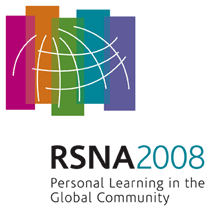
Abstract Archives of the RSNA, 2008
Joshua Kallen MD, Presenter: Nothing to Disclose
Bret Francis Coughlin MD, Abstract Co-Author: Nothing to Disclose
Michael Thomas O'Loughlin MD, Abstract Co-Author: Nothing to Disclose
Barry Stein MD, Abstract Co-Author: Consultant, General Electric Company
Consultant, Vital Images, Inc
Consultant, TeraRecon, Inc
To determine the presence or absence of pulmonary embolism using a CTPA protocol with a limited scan range, defined as from the superior aspect of the aortic arch through the heart, in patients with CTPA-diagnosed pulmonary embolism.
This HIPAA-compliant study was approved by the IRB and informed consent was waived. The records of all patients examined with computed tomographic pulmonary angiography (CTPA) for pulmonary embolism on the 64-slice CT scanner between 7/25/2005 and 2/8/2008 were retrospectively reviewed. Of those, all examinations initially interpreted as positive were transferred to an independent workstation and limited to the anatomic range from the top of the aortic arch through the heart. Two board-certified attending radiologists reviewed the limited scan range exams to determine whether or not pulmonary embolism was present. Discrepancies were settled by consensus.
On the 64-slice scanner a total of 1734 CTPA examinations for pulmonary embolism were performed. Seventeen percent (n=295) were interpreted as positive at the time of examination. The mean scan length of these exams was 259 mm. When the positive studies were limited to the anatomic range from the top of the aortic arch through the heart, none were interpreted as negative. The mean scan length of the limited scan range exams was 163 mm, a reduction of 37%.
In 295 CTPA examinations for pulmonary embolism performed on a 64-slice CT scanner and initially interpreted as positive, limiting the scan range from the aortic arch through the heart does not alter the diagnostic interpretation. The mean reduction in scan length is 37%.
Limiting the scan range of a CTPA for pulmonary embolism to the anatomic range from the aortic arch through the heart has the potential to limit dose without sacrificing diagnostic accuracy.
Kallen, J,
Coughlin, B,
O'Loughlin, M,
Stein, B,
Retrospective Validation of a Limited Scan Range CTPA Protocol for Pulmonary Embolism That Would Reduce Dose and Maintain Diagnostic Accuracy. Radiological Society of North America 2008 Scientific Assembly and Annual Meeting, February 18 - February 20, 2008 ,Chicago IL.
http://archive.rsna.org/2008/6007016.html

